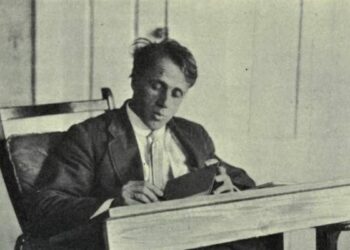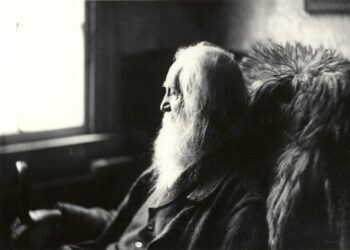Introduction
The World Is Too Much With Us By William Wordsworth “The World Is Too Much with Us,” a sonnet by William Wordsworth, was published in 1807 as part of his collection Poems in Two Volumes. This poem encapsulates the sentiments of the Romantic era, characterized by a profound appreciation for nature and a critique of industrialization and materialism. Wordsworth laments humanity’s disconnection from nature and the spiritual impoverishment that accompanies a life dominated by material concerns.
Through rich imagery and poignant language, Wordsworth articulates his concerns about the loss of connection to the natural world, suggesting that this disconnect leads to a diminished capacity for joy, understanding, and fulfillment. The poem serves as a powerful critique of the modern world, reflecting the broader themes of the Romantic movement, which sought to elevate nature and human emotion above the mechanization and rationalism of contemporary society.
Structure
“The World Is Too Much with Us” is written in the form of a Petrarchan sonnet, comprising 14 lines divided into an octave (the first eight lines) and a sestet (the final six lines). The rhyme scheme follows the traditional ABBAABBA pattern for the octave, while the sestet features a more flexible pattern, often CDCDCD or CDECDE. This structure allows Wordsworth to introduce his themes in the octave and then provide a resolution or reflection in the sestet.The World Is Too Much With Us By William Wordsworth
READ MORE
Overview
- Octave: In the first part of the sonnet, Wordsworth presents his lament about humanity’s preoccupation with materialism and the resultant disconnect from nature.
- Sestet: In the second part, he offers a reflection on the implications of this disconnect and expresses a yearning for a deeper spiritual connection with nature.
Summary
Lines 1-4: The Complaint
The World Is Too Much With Us By William Wordsworth The poem opens with a strong statement about humanity’s predicament: “The world is too much with us; late and soon.” Wordsworth immediately establishes a tone of urgency, indicating that humans are overwhelmed by the demands of the world. The phrase “too much” suggests an excess, implying that humanity is consumed by material concerns at the expense of a deeper connection to the natural world.
Wordsworth highlights the relentless pursuit of wealth and possessions, suggesting that this preoccupation leads to a spiritual void. The imagery evokes a sense of weariness and disillusionment, as people are caught in a cycle of consumption, losing sight of what truly matters in life.The World Is Too Much With Us By William Wordsworth

Lines 5-8: The Loss of Nature
In the next lines, Wordsworth expands on the theme of loss, lamenting that people “have given our hearts away.” This metaphorical phrase captures the idea that individuals have sacrificed their emotional and spiritual well-being for material gain. The poet criticizes society’s disregard for nature, suggesting that the industrial age has fostered a sense of alienation from the natural world.
He poignantly references the natural beauty that is being neglected, invoking the imagery of “getting and spending” as indicative of a lifestyle that prioritizes economic transactions over meaningful experiences. The phrase “we lay waste our powers” further emphasizes the futility of this pursuit, suggesting that by focusing on material wealth, humans are wasting their innate abilities to appreciate beauty, find joy, and connect with the world around them.
Lines 9-11: The Yearning for Connection
Transitioning into the sestet, Wordsworth shifts from lamentation to a longing for connection with nature. He expresses a desire for a relationship with the natural world that transcends the materialistic values of his time. Wordsworth’s use of the word “sight” emphasizes the importance of perception and awareness, urging readers to engage with nature in a more profound way.
The World Is Too Much With Us By William Wordsworth He yearns for a rekindling of that connection, suggesting that the true essence of life lies in the appreciation of nature’s beauty. Wordsworth’s plea is for a spiritual awakening that allows individuals to recognize and cherish the world around them, moving beyond the superficial concerns that dominate modern life.
READ MORE
Lines 12-14: The Divine in Nature
In the final lines of the poem, Wordsworth expresses a yearning for the divine presence that can be found in nature. He invokes classical mythology, referencing Proteus, a sea god known for his ability to change shape. By wishing he could “see” and commune with such beings, Wordsworth underscores the desire for a deeper connection to the spiritual aspects of nature.
The World Is Too Much With Us By William Wordsworth The concluding lines encapsulate the essence of the poem: that true fulfillment comes not from material wealth, but from a genuine relationship with the natural world. Wordsworth’s invocation of the divine suggests that nature is a source of wisdom and spiritual nourishment, capable of restoring what has been lost through the distractions of modern life.
Themes
1. Materialism vs. Spirituality
One of the central themes of “The World Is Too Much with Us” is the tension between materialism and spirituality. Wordsworth critiques the relentless pursuit of wealth and possessions, suggesting that this preoccupation leads to spiritual impoverishment. The poem serves as a cautionary reminder that true fulfillment lies in a connection with nature and a deeper understanding of life beyond material concerns.The World Is Too Much With Us By William Wordsworth
2. Alienation from Nature
Wordsworth laments humanity’s disconnection from the natural world, emphasizing the alienation that results from industrialization and urbanization. The poem highlights the importance of nature in fostering emotional and spiritual well-being, suggesting that the loss of this connection diminishes the quality of human life.
3. The Beauty of Nature
Throughout the poem, Wordsworth emphasizes the inherent beauty of nature and its capacity to inspire awe and wonder. He suggests that by neglecting the natural world, humanity misses out on profound experiences that enrich the soul. Nature is portrayed as a source of joy and fulfillment, offering a counterpoint to the emptiness of material pursuits.
4. The Need for Reflection and Awareness
Wordsworth advocates for the importance of reflection and awareness in the human experience. He urges individuals to engage with nature mindfully, recognizing its beauty and significance. This theme aligns with the Romantic ideal of introspection and self-awareness, encouraging readers to seek deeper connections with the world around them.
5. The Search for the Divine
The poem explores the idea of seeking the divine in nature, suggesting that spiritual fulfillment can be found through a genuine appreciation of the natural world. Wordsworth implies that nature is a manifestation of the divine, capable of nurturing the soul and providing insights into the deeper mysteries of life.The World Is Too Much With Us By William Wordsworth
Imagery and Symbolism
Wordsworth’s use of imagery and symbolism in “The World Is Too Much with Us” enhances the poem’s emotional depth and thematic resonance.
- Nature: The natural world serves as a symbol of beauty, wisdom, and spiritual nourishment. Wordsworth evokes images of the sea, the earth, and the divine to emphasize the importance of reconnecting with nature.
- Materialism: The references to “getting and spending” symbolize the materialistic values that dominate society. Wordsworth critiques this lifestyle, suggesting that it leads to spiritual emptiness.
- Proteus: The invocation of Proteus represents the desire for a deeper understanding of nature and its mysteries. By referencing this mythological figure, Wordsworth underscores the longing for a connection to the divine.
READ MORE
Language and Tone
Wordsworth’s language in “The World Is Too Much with Us” is characterized by its lyrical quality and emotional resonance. The tone shifts throughout the poem, oscillating between lamentation and yearning, ultimately culminating in a call for spiritual awakening.The World Is Too Much With Us By William Wordsworth
Lyrical Quality
The lyrical quality of the poem is achieved through its rhythmic patterns and musicality. The use of iambic pentameter contributes to the sonnet’s flowing nature, mirroring the natural rhythms of life and memory. This musicality enhances the emotional depth of the poem, inviting readers to engage with its themes on a profound level.
Emotional Range
Wordsworth’s emotional range is evident in his exploration of complex themes. The poem oscillates between moments of sorrow and hope, capturing the bittersweet essence of the human experience. The tone ultimately shifts towards a yearning for connection, encouraging readers to seek out the beauty and spirituality inherent in nature.The World Is Too Much With Us By William Wordsworth c

Conclusion
“The World Is Too Much with Us” is a poignant exploration of the disconnection between humanity and nature in the face of industrialization and materialism. Wordsworth’s reflections on the spiritual impoverishment that accompanies a life dominated by material concerns resonate deeply with readers, inviting them to reconsider their relationship with the natural world. Through rich imagery, lyrical language, and profound themes, the poem serves as a timeless reminder of the importance of reconnecting with nature and seeking fulfillment beyond the superficial demands of modern life.
(FAQ)
1. What is the main theme of “The World Is Too Much with Us”?
The main theme revolves around the tension between materialism and spirituality. Wordsworth critiques humanity’s preoccupation with wealth and possessions, suggesting that this focus leads to a disconnection from nature and spiritual impoverishment.
2. How does Wordsworth use nature in the poem?
Nature serves as a powerful symbol throughout the poem, representing beauty, wisdom, and spiritual nourishment. Wordsworth emphasizes the importance of reconnecting with the natural world to find true fulfillment and joy.
3. What does the phrase “The world is too much with us” mean?
This phrase encapsulates Wordsworth’s lament that humanity is overwhelmed by the demands of the material world, leading to a loss of connection with nature and spiritual fulfillment. It reflects the excesses of modern life and the resulting discontent.
4. How does the poem reflect Romantic ideals?
The poem reflects Romantic ideals through its emphasis on emotion, nature, and individual experience. Wordsworth’s critique of materialism and celebration of nature align with key themes of the Romantic movement.
5. What is the structure of the poem?
The poem is written as a Petrarchan sonnet, consisting of 14 lines divided into an octave and a sestet. The rhyme scheme is ABBAABBA for the octave and typically CDCDCD or CDECDE for the sestet.
6. How does Wordsworth contrast materialism with spirituality in the poem?
Wordsworth contrasts the superficial concerns of materialism, represented by “getting and spending,” with the deeper spiritual fulfillment that can be found in nature. He emphasizes that true happiness lies in connecting with the natural world.
7. What role does nostalgia play in the poem?
Nostalgia is present in the longing for a deeper connection with nature and the spiritual experiences of the past. Wordsworth reflects on the loss of this connection, driving the exploration of memory and the desire for renewal.
8. How does the poem conclude?
The poem concludes with a yearning for a rekindled relationship with nature and the divine. Wordsworth expresses hope that through awareness and appreciation of the natural world, individuals can reclaim the joy and fulfillment lost in material pursuits.
READ MORE

















